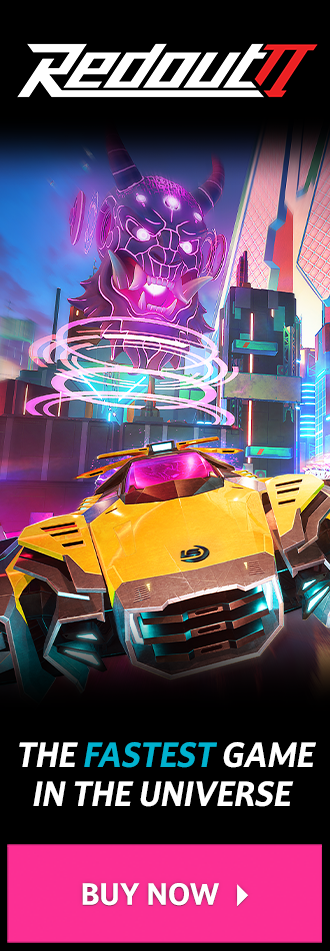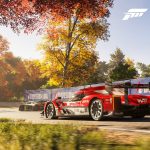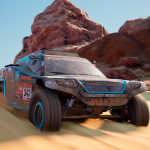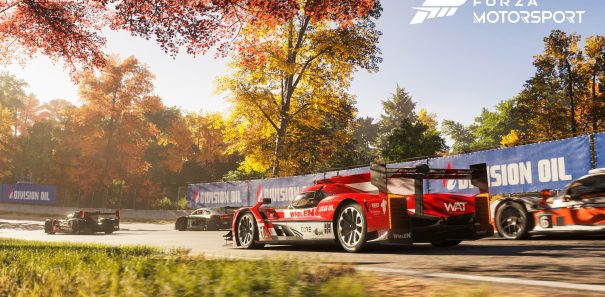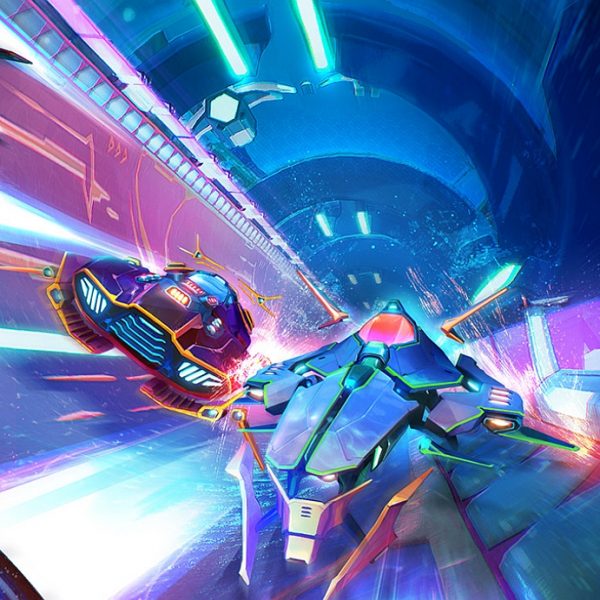Despite its lofty ambitions, Ivory Tower’s open world MMO racer The Crew was criminally overlooked on release. And that’s a shame, because while it’s a game that requires a lot of time investment to reap the rewards, it gets better the more you play it.
The initial release of The Crew was by no means perfect, mind you. Reviews rightly panned it for its dated graphics, infuriating AI and a shoehorned story that made The Fast and Furious look like Oscar material. Releasing The Crew against the goliath that is Playground Games’ superb open world racer Forza Horizon 2 probably didn’t help, either – asking players to choose between an established, reputable racing franchise and a new unknown IP with a silly name was never going to end well.
The Crew had the potential to be a huge hit for Ubisoft, especially when you consider the talent behind the wheel. The Crew was developed by an ensemble team responsible for some of the best open world racing games ever made: the Lyon-based team at Ivory Tower (which was recently acquired by Ubisoft) is made up of veteran developers who worked on the legendary Test Drive: Unlimited, an MMO racer that laid the foundation for The Crew to build on. Ivory Tower also collaborated with Ubisoft Reflections, a studio best known for Driver: San Francisco which was one of the better open world driving games of last-gen.
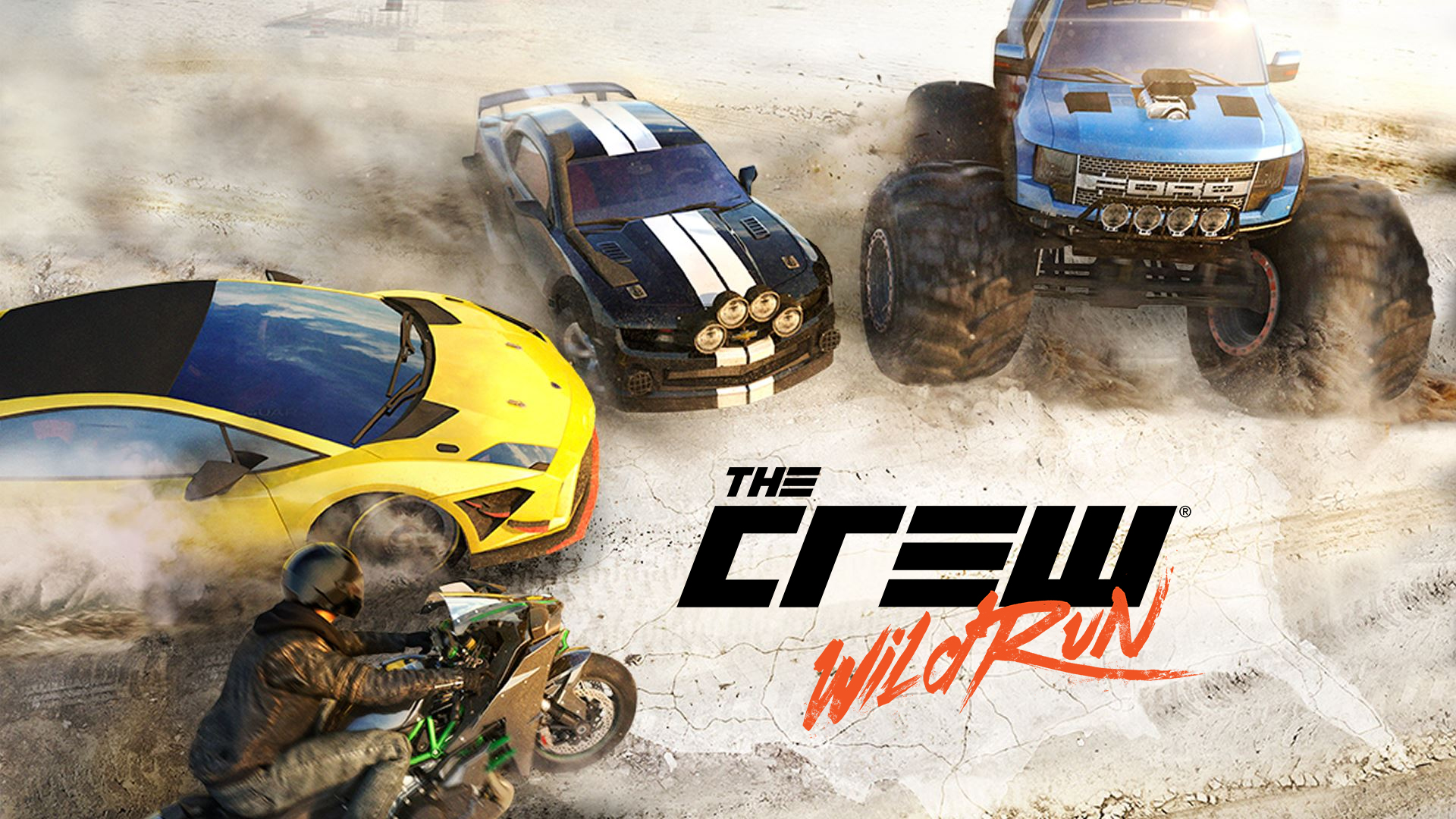
Looking past The Crew’s flaws revealed a deep, unique and rewarding game. The Crew’s stunning recreation of the United States is still by far the best open world you’ll find in any racing game. While most racing games are set in a single city, The Crew crams condensed versions of several US cities into a map so monumental it takes a whole hour to drive from coast to coast.
Indeed, the sense of scale and is unsurpassed: The Crew’s map is so expansive, it’s bigger than several other open world games combined. It’s a realisation of all your American road trip fantasies rolled into one.
Its diversity is unequaled; its sense of freedom is liberating. No other game can take you from the backstreets of Detroit, to the hustle and bustle of Manhattan, the sun-swept beaches of Miami, to the desert canyons of the South and beyond in one sitting. Cruising with friends online, discovering new locations and embarking on extended road trips is a sublime experience. Games that require extensive driving between missions are often a chore, but The Crew makes the journey worthwhile – no other game captures the sights and sounds of the United States so masterfully. You can of course fast travel to any location you’ve discovered, but that would be doing Ivory Tower’s efforts a disservice.
The Crew’s unique car upgrade system also sets it apart. The Crew bills itself as a CARPG and the Pokemon of car games – a tagline that’s wholly justified. Instead of spending your cash on upgrades, performance parts are gradually given to you as you rank up your car whenever you complete a story mission or challenge event. The fastest way to rank up is to complete the bite-sized skill challenges littered across the map: challenges range from weaving around slaloms to test your precision driving, following a path that sticks to the racing line or simple speed tests. While this means you’ll be doing plenty of grinding, it works as an incentive to explore the rich open world and rewards players who rack up the miles.
Then there are the Spec upgrades which come in five different flavours to suit different driving styles: Street, Dirt, Perf, Raid and Circuit. Each Spec modifies the appearance and ability of your car to tackle the varying errains or suit the requirements of the story, such as increasing the performance for street races, adding new body kits or raising the suspension to handle off-road terrain. Watching your car evolve from a factory stock car to a race-ready circuit car gives you a gratifying sense of progression. The slick Transformers-style animation depicting your car being stripped of its parts in the garage to reveal the fully working components as the specs are assembled never gets old.
Reconnecting The Crew
Like many, I wasn’t able to put as much time into The Crew as I would have liked when it was first released. Over a year after release, we now have Wild Run, the first major expansion that attempts to revitalise The Crew and reel players back in with several new vehicle types, a monthly online competition and vastly improved visuals. In essence, Wild Run is Ivory Tower’s chance to give The Crew a new lease of life. But before delving into the expansion, there’s been plenty of free content recently added to The Crew that’s worth your attention.
If it’s been a while since you’ve played The Crew, the first thing you’ll notice is that the graphics have had a major makeover. The original release of The Crew looked like a passable last-gen game at best, but Ivory Tower have taken the time to spruce up the graphics in a free patch update (remember, The Crew requires an online connection so the update is mandatory, meaning it’s no longer possible to play The Crew in its original guise). Ivory Tower have done a commendable clean-up here: The Crew now sparkles like a car fresh out of a car wash.
Colours are more vivid, reflections are more prominent and the overall image is sharper thanks to a new dynamic lighting engine that make the visuals truly shine. Admittedly, The Crew still isn’t going to cause its closest competitors Forza Horizon 2 and Need for Speed to feel self-conscious, but it’s a marked improvement that brings the visuals up to current-gen standards. There’s virtually no slowdown either, which is remarkable when you consider the added strain the engine has to cope with from the new visual effects, not to mention the gargantuan size of the map. Granted, the long loading times can be a pain when fast travelling to a destination on the map and the PC benefits from running at 60fps compared to a capped 30fps on console, but you can’t deny The Crew is still a tremendous technical achievement over a year after release.

The update also introduces dynamic weather effects, with lashing rain leaving puddles on the road. The effect isn’t entirely superficial either, as the reduced grip makes racing in wet conditions noticeably more difficult. Rainstorms are an all-too rare sight though, sadly, and the puddles are completely static, meaning there are no satisfying water splashes when you drive through them.
There’s been some tinkering under the bonnet, too, resulting in much improved handling. Previously you had to do a lot of grinding to rank your car up before it became remotely fun to drive, but now they are much more responsive to your inputs. The Crew’s previously stiff and imprecise handling has been refined and loosened up resulting in more fluid driving, so your car is more liable to oversteer into corners if you jam the throttle. In fact, The Crew’s driving physics are now most akin to Driver San Francisco’s lively car handling.
A belated photo mode has also been added, and while it’s surprising to see it’s taken so long to feature in a game that actively encourages sight-seeing, the extensive array of options make it worth the wait, allowing you to alter camera angles, add motion blur and adjust colour filters to capture the perfect shot. It’s a surprisingly comprehensive toolset, to the point that some options border on being gratuitous: you can even change the time of day by the hour or choose the exact level of mud splattered on your car with a slider. Online forums are already rife with a plethora of photogenic shots chronicling the community’s automotive adventures.
Scratched paintwork
Unfortunately, some of The Crew’s persisting flaws threaten to tarnish its fresh coat of paint. The abysmal story, for example, is still hard to take seriously despite Ivory Tower’s best efforts to engage you. For the uninitiated, you play as Alex Taylor (who bears a striking resemblance to Breaking Bad’s Walter White), who becomes embroiled in an FBI operation following the death of his brother. Working for an agent named Zoe, Alex must infiltrate a notorious Detroit street racing gang known as the 510s to exact revenge on the gang’s leader who murdered his brother and aid the FBI in tracking them down.
Missions generally fall into one of several categories: there’s standard street races, takedown missions where you have to ram a target car, police getaways, time trials and smugglers runs where you have to smash into targets within the time limit to gather intel. Despite some flashy CGI cut scenes created by an external visual FX studio on a Blockbuster budget, The Crew’s narrative falls flat with its clichéd characters, cringe-worthy dialogue and plot points that have little relation to in-game missions. It’s one of many examples of a racing game that didn’t need a narrative to contextualise the action.
It’s not as if you can ignore the storyline either, as talking character heads regularly pop up and interrupt the gameplay with their inane dialogue. When you’re not invested in the characters, their constant presence is downright distracting. Granted, Driver San Francisco’s storyline about an undercover cop who has the ability to “shift” into other people’s bodies whilst in a coma-induced dream was far-fetched, but at least it didn’t take itself so seriously. The Crew’s story is needlessly overbearing by comparison.
Races in The Crew are often unfair thanks to some blatantly rubber-banding AI opponents who inexplicably speed ahead after you left them behind, no matter how high your car’s ranking. Likewise, it’s obvious that target cars in Takedown missions are deliberately engineered to stay ahead of you for a predetermined time, only to close the gap just before the time runs out. Then there’s The Crew’s suicidal police force who show little regard for their own lives, resorting in aggressive tactics to take you down. If police in the real world adopted some of The Crew’s criminal-catching techniques, there would undoubtedly be civilian casualties.

Being an MMO, The Crew requires an internet connection to make the map constantly populated by other players. The Crew encourages you to play co-operatively in “crews” of up to four players, allowing you to cruise together and take on missions co-operatively. It certainly makes takedown missions and races more involving – providing you can find other players willing to join you. The other downside is that the game is completely inaccessible if the servers are down. The Crew arguably justifies its requirement for an internet connection better than Need for Speed, but it still doesn’t justify the inability to play story missions or explore the map offline.
Consequently, The Crew’s online multiplayer is somewhat muddled. Outside of story missions and challenges, you can only play online events in designated PVP missions or Faction missions that reward huge payouts for longer missions, but it seems like an oversight that you can’t challenge players to instant races in an open world racing game like you could in Test Drive Unlimited by flashing your headlights.
So that’s The Crew in a nutshell, then. It’s still not perfect, but, like DriveClub, it’s come on in leaps and bounds since its shaky start. The Crew is easy to recommend for its awe-inspiring open world alone, particularly now as preowned prices are plummeting. Whether you should buy the Wild Run Expansion is a different proposition, however.
Into the Wild
At the centre of Wild Run is The Summit, a monthly competition situated in the midst of a summer festival at a designated spot on the map. Its raving setting evokes a similar vibe to the fun and frolics of the Forza Horizon festival, which I’m sure is completely coincidental.

The Summit consists of four weekly qualifying events leading up to the main event at the end of each month. Achieving three medals in the qualifiers will earn you an access pass to the final Summit event. To earn your pass to qualifying events, you have to participate in Freedrive Stunt Challenges which give you randomised objectives, but in all honesty they’re not very fun to play – such riveting “stunts” include driving on the correct side of the road for a certain distance or near miss 20 cars.
Alternatively, you can invite players to FreeDrive Challenges but these also leave a lot to be desired: you can place checkpoints around the map and challenge players to a race, but you have to be in a Crew of players. It’s less hassle to just buy an access pass to The Summit if you have 180,000 credits to spare.
These challenges also highlight the critical drawback of The Crew’s online design: the developers want you to play in crews with other players, but not everyone is always willing to cooperate. Unsurprisingly, The Crew is best played with like-minded friends, but for a game where the online component is so integral to the game design it’s surprisingly difficult to find players willing to join your crew which doesn’t bode well for the lasting community.
Things improve when you enter The Summit, however. The Wild Run Expansion does for The Crew what The Ballad of Gay Tony did for Grand Theft Auto IV – it focuses on fun. This is best showcased in Wild Run’s new Extreme car specs: Monster, Drift and Drag, which all feature in Summit events.
Monster events have you bouncing around arenas in cars with comically oversized monster truck whels, racking up points against the clock by smashing into tokens and performing ludicrous stunts. It plays more like Tony Hawks Pro Skater than a driving game. It’s all unapologetically silly, taking place in skate park-style arenas filled with ramps, half pipes and loop the loops. Out of all the new specs, Monster events are easily the most entertaining – it’s hard not to smirk after landing a well-executed backflip in a monster truck.

As you would expect, Drift events challenge you to chain drift combos against the clock, but they’re spoiled somewhat by the super-sensitive handling. Drift cars are too loose and light to control with any nuance – it constantly feels like you’re driving on ice, which makes it difficult to judge the level of traction, causing you to spin out frequently. There is fun to be had when you get to grips with the twitchy physics, however. Points are rewarded generously if you manage to chain together enough combos, and Drift events are particularly intense when played head-to-head with another player – it’s incredibly intense watching your scores rack up in real-time, only to out-drift your rival with seconds to spare. Drift events are perhaps a bit too forgiving however, as you don’t get penalised for spinning out or hitting objects.
Drag events on the other hand are decidedly dull, amounting to simple quick-time events that require little skill. You simply rev your engine in time with the on-screen meter, time your acceleration and use the analogue stick to shift in time with the on-screen prompts (it would help if the game explained this – it took several tries to work out how to manually shift) as your car gathers speed before activating your nitrous at the right moment to boost across the finish line. Bizarrely, some Drag events take place on city streets with corners, which Drag cars aren’t equipped to handle since they’re tuned for raw speed. Drag racing is underrepresented in racing games, but it’s easy to see why as Wild Run’s Drag events are fun novelties but ultimately forgettable as they’re comparatively easy to master.
A handful of existing cars in The Crew can be upgraded to Drift, Monster and Drag Specs, but they’re not very practical outside Summit events. Equipping massive monster truck wheels to a humble Abarth 500 hatchback is an amusing novelty at first, but Monster trucks can’t even crush cars which is a missed opportunity, while Drift and Drag cars are so hard to handle they’re only suitable to drive in their contained events. Consequently, it’s unlikely you’ll use any of the Extreme specs outside of The Summit which severely limits their appeal.

Bikes make their debut in Wild Run, but they’ve been woefully underrepresented until recently. While you could still buy bikes from dealers scattered around the map, they rarely featured in Summit events so they were easy to overlook. That was until a recent update which added Stunt Races to the Summit event calendar, challenging you to pass through checkpoints on custom courses whilst performing backflips on a dirt bike.
While only a small selection of Road and Dirt bikes available from manufacturers such as BMW, Kawasaki and Ducati, the nimble, accessible handling of the bikes provides a very different experience to the tyre-shredding vigour of the cars, allowing you to take in the sights at a more leisurely pace and weave through traffic with ease. Bikes are arguably Wild Run best new addition, so it’s surprising to see them featured so sparingly.
Wild Run also adds a handful of new cars to the roster such as the Subaru BRZ, Aston Martin Vanquish and Pagani Zonda. The overall car selection is still too slim however, falling short of its competitor’s by some margin. The Crew simply can’t compete with Forza Horizon 2’s eclectic car list. Having said that, the specs you can apply to each car does help bolster the variety, as each spec gives your car unique characteristics.
Your Summit high scores are stored in the world rankings and the higher your rank the better your reward will be at the end of the month. It can be addictive trying to improve your score and ranking to increase the chance of receiving a reward, but whether Wild Run can keep players hooked for an entire year remains to be seen. Having said that, I’ve been consistently checking into The Summit several months in a row now as the monthly rewards are enticing – particularly as newly added cars can only be unlocked in The Summit initially before becoming available to buy several months later. They’re pretty desirable cars, too: last month’s prize was a brand new BMW M4 complete with official M performance parts available to customise, while this month’s Summit offers the chance to win a Ferrari F40.
Ivory Tower have also done a commendable job supporting The Crew, with regular new game modes, spec updates and fixes released in monthly updates: since the release of Wild Run, we’ve had a photo mode, video mode, a Practice mode, Speedtrap Challenges and Stunt Races, plus new cars, spec updates and physics improvements.
While The Crew’s car roster is steadily growing (Wild Run adds a handful of new cars such as the Subaru BRZ, Aston Martin Vanquish and Pagani Zonda). the overall car selection is still too slim and falls short of its competitors by some margin. The Crew simply can’t compete with Forza Horizon 2’s eclectic car list. Having said that, the specs you can apply to each car does help bolster the variety, as you feel like you’re driving a different car across the different specs.
Wild Run’s biggest problem however is that it doesn’t offer value for money for existing players – at £24.99, it’s more expensive than The Crew’s season pass. Considering you can buy the main game for under £15.00 preowned if you look around, the amount of content in Wild Run doesn’t justify the asking price. If, however, you don’t already own The Crew, a bundle containing both The Crew and the Wild Run expansion is available for the same price as the standalone expansion, which is a more enticing proposition.
Speaking of pricing, Wild Run’s new car specs are inexcusably expensive to equip. Want to upgrade your car to Drift spec? That will be half a million credits.
New vehicles are similarly overpriced: some of the entry motorcycles are affordable, but the Ducati will also set you back half a million. It’s all an obvious ploy to encourage you to succumb to dreaded micro-transactions, as you’re given the option to buy credits with real world cash. You can earn free upgrades by participating in Summit events, but not before you’ve put in some serious hours. It’s worth keeping an eye on dealer offers for cheaper spec upgrades. It’s disappointing to see a game which gives you so much freedom with its open world is so restricting when it comes to accessing content you’ve already paid for.
The Crew Wild Run’s extra vehicle variety and monthly Summit events are decent diversions that help keep The Crew compelling, but the steep asking price makes it difficult to recommend as a standalone expansion for existing players.
However, the myriad of improvements made to the core game have successfully revitalised The Crew, making its outstanding open world well worth returning to. The Crew is continually coming closer to living up to its true potential – if you wrote it off before, do yourself a favour and give The Crew another chance.
Our Review
Summary
The Crew Wild Run’s extra vehicle variety and monthly Summit events are decent diversions that help keep The Crew compelling, but the steep asking price makes it difficult to recommend as a standalone expansion for existing players. However, the myriad of improvements made to the core game have successfully revitalised The Crew, making its outstanding open world well worth returning to. The Crew is continually coming closer to living up to its true potential – if you wrote it off before, do yourself a favour and give The Crew another chance.



